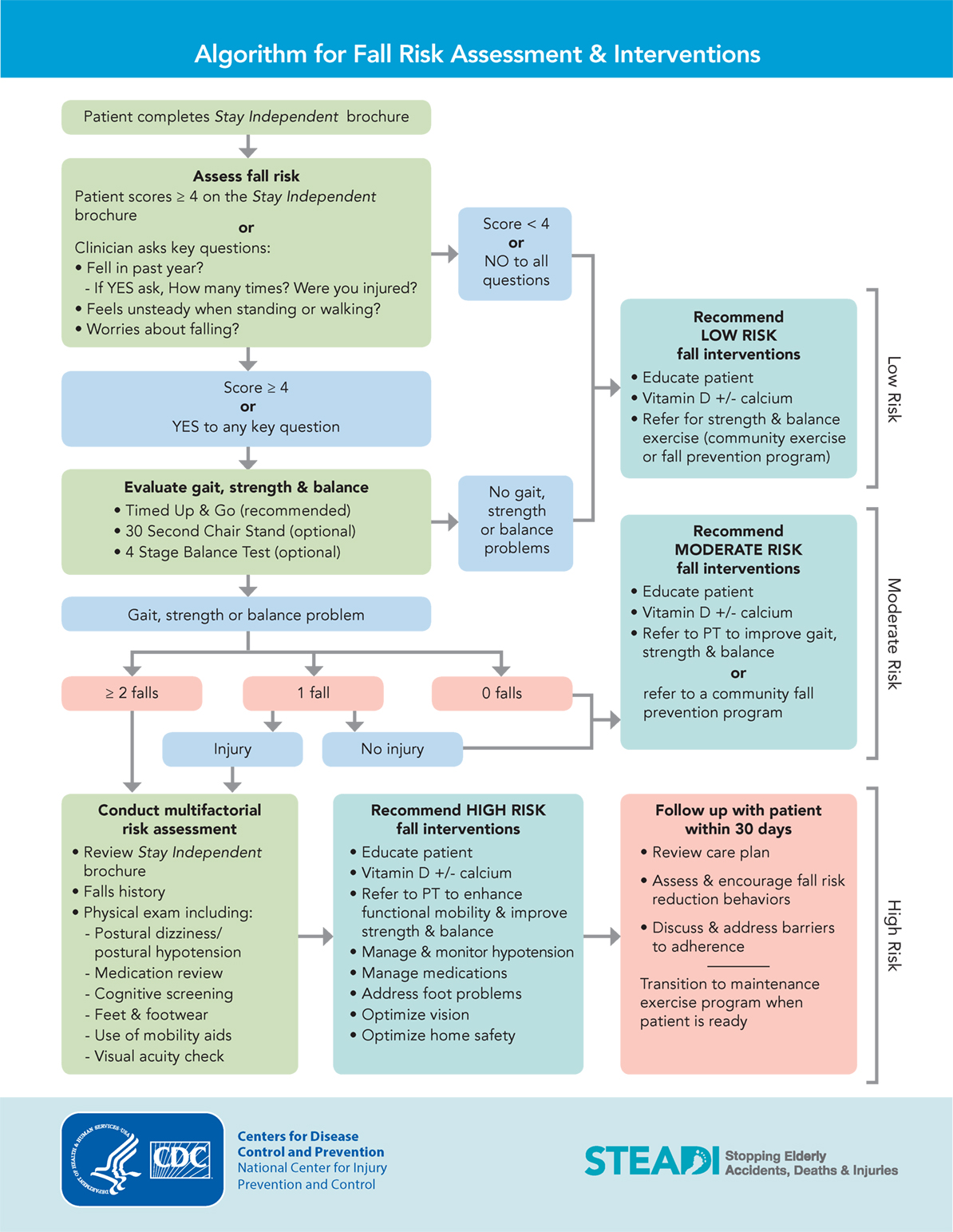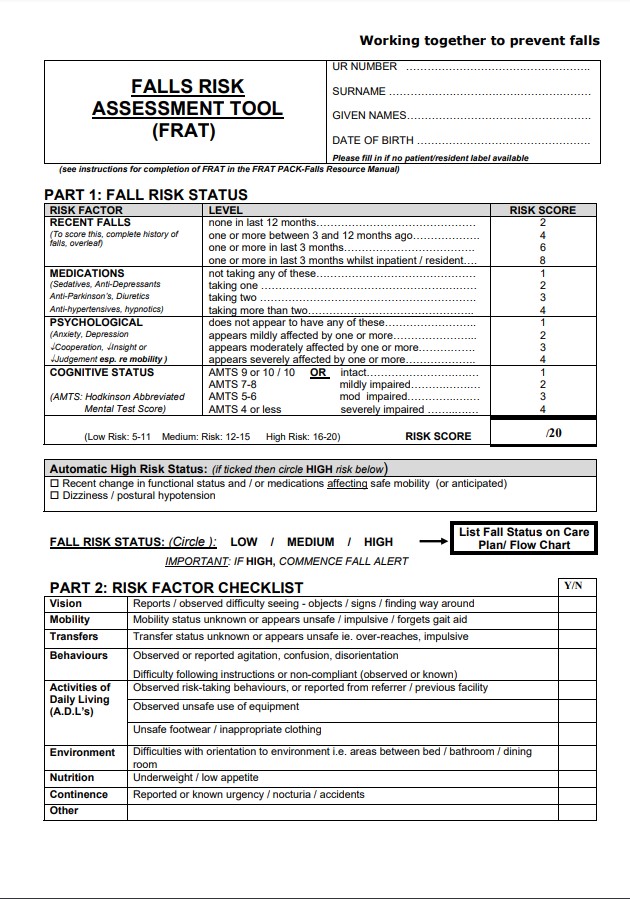The smart Trick of Dementia Fall Risk That Nobody is Discussing
Dementia Fall Risk Fundamentals Explained
Table of ContentsA Biased View of Dementia Fall RiskThe 45-Second Trick For Dementia Fall RiskDementia Fall Risk - An OverviewSome Known Details About Dementia Fall Risk
An autumn threat assessment checks to see exactly how likely it is that you will drop. It is mostly provided for older adults. The evaluation generally includes: This consists of a series of inquiries about your overall health and if you have actually had previous falls or problems with equilibrium, standing, and/or walking. These tools test your strength, balance, and gait (the way you stroll).Treatments are referrals that may minimize your risk of falling. STEADI consists of 3 steps: you for your threat of falling for your risk elements that can be enhanced to attempt to avoid falls (for example, equilibrium issues, impaired vision) to lower your threat of dropping by utilizing effective techniques (for example, offering education and learning and sources), you may be asked a number of inquiries consisting of: Have you fallen in the previous year? Are you fretted about dropping?
If it takes you 12 secs or even more, it may indicate you are at greater risk for a fall. This test checks stamina and balance.
Move one foot midway forward, so the instep is touching the big toe of your various other foot. Move one foot fully in front of the various other, so the toes are touching the heel of your other foot.
Some Ideas on Dementia Fall Risk You Need To Know
Many falls happen as an outcome of multiple adding variables; for that reason, handling the risk of falling begins with identifying the variables that add to drop danger - Dementia Fall Risk. Several of the most pertinent danger aspects include: History of prior fallsChronic clinical conditionsAcute illnessImpaired gait and balance, lower extremity weaknessCognitive impairmentChanges in visionCertain high-risk drugs and polypharmacyEnvironmental aspects can likewise boost the danger for falls, consisting of: Inadequate lightingUneven or damaged flooringWet or unsafe floorsMissing or damaged handrails and get barsDamaged or incorrectly equipped equipment, such as beds, mobility devices, or walkersImproper usage of assistive devicesInadequate guidance of individuals residing in the NF, consisting of those that exhibit aggressive behaviorsA successful loss threat management program requires a detailed professional analysis, with input from all participants of the interdisciplinary group

The treatment plan must likewise consist of treatments that visite site are system-based, such as those that advertise a secure atmosphere (suitable lights, hand rails, grab bars, etc). The efficiency of the treatments should be evaluated occasionally, and the care strategy changed as necessary to reflect modifications in the autumn threat evaluation. Implementing a loss risk administration system making use of evidence-based finest practice can reduce the occurrence of falls in the NF, while restricting the possibility for fall-related injuries.
Not known Facts About Dementia Fall Risk
The AGS/BGS guideline suggests screening all adults aged 65 years and older for autumn threat each year. This screening contains asking people whether they have dropped 2 or even more times in the past year or sought medical interest for a fall, or, if they have actually not fallen, whether they really feel unstable when walking.
Individuals that have actually dropped once without injury must have their equilibrium and gait evaluated; those with stride or balance abnormalities ought to receive added assessment. A history of 1 loss without injury and without stride or balance problems does not warrant more assessment past ongoing yearly autumn risk testing. Dementia Fall Risk. An autumn danger evaluation is needed as component of the Welcome to Medicare assessment

Dementia Fall Risk - The Facts
Recording a drops history is one of the top quality indicators for fall prevention and management. copyright medications More Bonuses in certain are independent forecasters of falls.
Postural hypotension can frequently be eased by minimizing the dosage of blood pressurelowering medications and/or quiting drugs that have orthostatic hypotension as a side effect. Use of above-the-knee assistance tube and copulating the head of the bed elevated might likewise minimize postural decreases in high blood pressure. The preferred elements of a fall-focused physical exam are displayed in Box 1.

A Yank time higher than or equal to 12 seconds recommends high loss threat. Being incapable to stand up from a chair of knee elevation without using one's arms suggests increased fall danger.